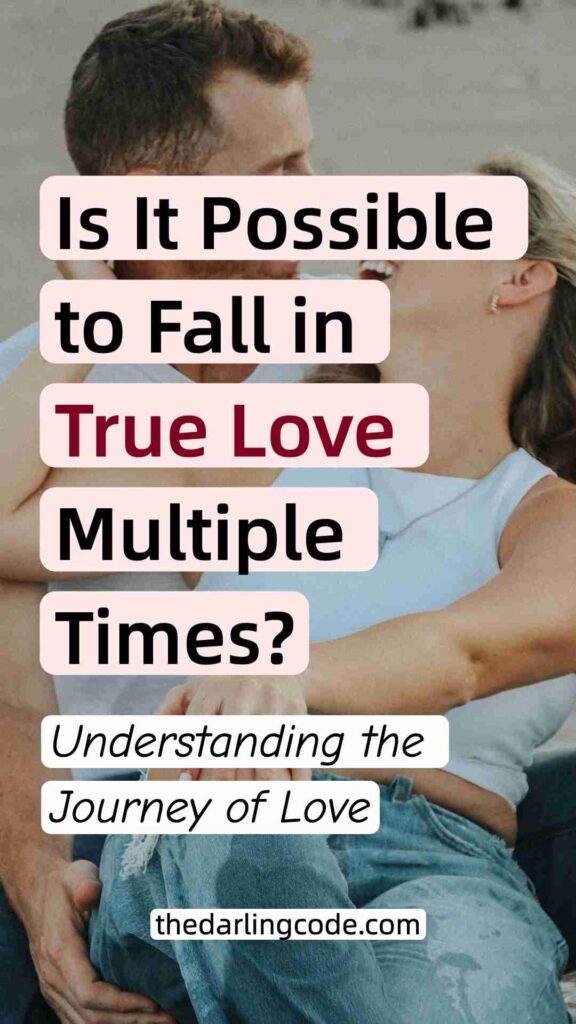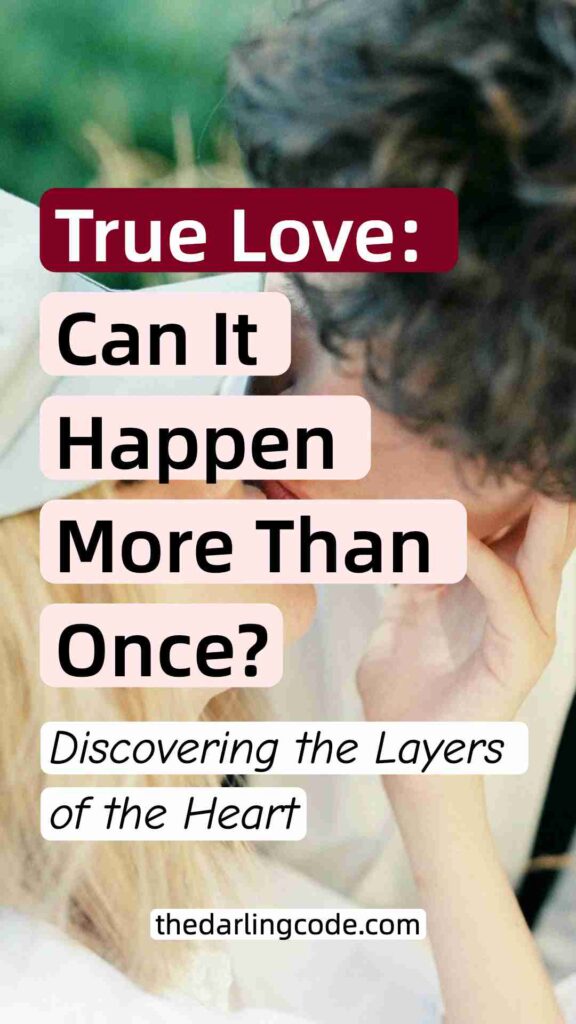Can You Fall in True Love More Than Once?
The experiences shared in this article are based on real emotional journeys, but all personal details are anonymized and used with the explicit written permission of the clients. Any resemblance to actual persons, living or dead, is purely coincidental. We are committed to treating all client stories with the utmost confidentiality and respect.
Here’s what no one warns you about love: It’s not a finite resource—it’s a muscle.
The more you use it wisely, the stronger it grows.
Yet we’ve been conditioned to treat “true love” like a rare gem, something you either find young and cling to forever or spend a lifetime mourning.
’ve spent 12 years as a relationship coach untangling this myth, and here’s what I’ve learned: Our hearts aren’t albums with limited space for tracks.
They’re gardens where new blooms can grow alongside the old.
Save this article for later—Pin it to Pinterest and come back when you need it! 📌

Redefining “True Love” (Spoiler: It’s Not Disney’s Version)
Let’s dismantle the myth first. True love isn’t:
- A finish line (“You’ve found The One!”)
- A cure-all for loneliness
- A static state of perpetual bliss
A client named Mara taught me this. At 38, she left a 12-year relationship that looked perfect on paper: matching Ivy League degrees, shared hobbies, mutual friends.
“We were golden retrievers in human form,” she joked. But she confessed, “We never fought because we never cared enough to disagree.”
True love reveals itself through:
- Collaborative growth (e.g., learning to argue productively)
- Emotional attunement (noticing subtle shifts in each other’s energy)
- Shared purpose (beyond just shared interests)
My husband and I practice what I call “Monday Night Reality Checks”—20 minutes each week where we discuss anything from “I felt ignored when you scrolled Instagram during dinner” to “Should we rethink our retirement plan?” It’s unsexy but vital maintenance work.
The Three Ghosts That Haunt Second Chances
1. The Comparison Phantom
After her divorce, Lisa dated someone who “checked all the boxes” her ex hadn’t. But she kept mentally contrasting their first camping trip to her previous marriage’s European vacations. We worked on reframing: “What if this relationship gets to be its own original story?”
Try: Write three unique qualities about your current/potential partner that have nothing to do with past relationships.
2. The Guilt Gremlin
Tom, a widower, struggled with guilt when developing feelings for a neighbor. We created a ritual: Every morning, he’d spend five minutes talking to his late wife’s photo about his day. “It helps me feel she’s still part of my journey,” he said.
Remember: Love isn’t a betrayal—it’s a testament to your capacity to heal.
3. The Scarcity Shadow
“If this isn’t the love story, am I wasting time?” my 29-year-old client fretted. We explored how every relationship teaches us something, even if it doesn’t last forever. She later told me: “I stayed present instead of obsessing about forever. Turns out, he’s an amazing ‘right now’ partner.”
When New Love Meets Old Scars
Sarah’s story sticks with me. At 45, she fell hard for a colleague while recovering from an abusive marriage. The intensity terrified her. “What if I’m just repeating patterns?”
We broke it down:
- Identify the difference between chemistry and compatibility
Their electric banter felt exciting, but did they align on core values? (Spoiler: He wanted kids; she didn’t.) - Create a “Growth vs. Repeat” checklist
Example: Does this relationship help me practice setting boundaries? (Growth) vs. Does it trigger my fear of abandonment? (Repeat) - Implement a 3-Week Observation Period
She journaled daily about interactions with him, then noticed: “I feel anxious, not safe.”
Married but Developing Feelings? A Roadmap
Let’s normalize this: Developing crushes doesn’t mean your marriage is failing. In my practice, I guide clients through this 4-step process:
1. The “Mirror Exercise”
Ask: What does this attraction reflect about my current needs?
Example: A client realized her office crush highlighted her hunger for creative collaboration—something she later cultivated with her husband through pottery classes.
2. The Transparency Tightrope
Should you tell your partner? Depends. One client told her husband: “I want to share something vulnerable—not because I’ve acted on it, but because I value our honesty.” They used it as a springboard to discuss emotional intimacy gaps.
3. The Containment Strategy
Limit interactions that fuel fantasy. A client I worked with asked to be moved to a different office from her crush, explaining: “I need to protect my peace.”
4. Reignite Your Primary Relationship
Try the “Newlywed Filter”: For one month, act as if you’re newly dating. Send flirty texts, try a new activity weekly, leave surprise notes.
Building Multiple Love Stories: A Practical Guide
Phase 1: The Emotional Archaeology
- List lessons from past relationships (e.g., “I learned I need space to process anger”)
- Identify non-negotiables vs. flexibilities (e.g., Must: Shared financial values / Flexible: Hobbies)
Phase 2: The Compatibility Compass
Use my “Breadcrumb Trail” method:
- Note small moments that made you feel seen (e.g., “He remembered my coffee order during a stressful day”)
- Track energy levels after interactions (Drained? Energized?)
- Assess conflict patterns (Do you feel respected even when disagreeing?)
Phase 3: The Integration
For those navigating love after loss:
- Create transitional rituals (e.g., repurposing wedding china into a mosaic table)
- Design new traditions (A widowed client and her new partner bake her late husband’s famous pie recipe together every Thanksgiving)
Final Words from The Darling Code
True love isn’t about finding a perfect person—it’s about choosing to create something real, repeatedly. Whether you’re 25 and swiping on apps or 65 and redisdating, your heart’s capacity isn’t diminished by how many times you’ve loved; it’s expanded.
Your first step today:
- Grab a mug (or mason jar—no judgment) and list 3 things you now know about love that younger-you didn’t. Mine? 1) Quiet love sustains better than dramatic love 2) Shared values > shared playlists 3) Repair builds stronger bonds than perfection
With heart,
The Darling Code
P.S. Pin this to your “Relationship Reminders” board and try the Breadcrumb Trail exercise on your next date. Courage tastes better than cinnamon rolls.
Got value from this article? Pin it to Pinterest for easy reference and help others discover it! 🌟


ABOUT THE AUTHOR
Carsey, Founder, Editor-in-Chief & Relationship Coach
Carsey is the heart and mind behind this space. As a Relationship Coach and Editor-in-Chief, she blends practical advice with storytelling to help you navigate love, connection, and everything in between.






